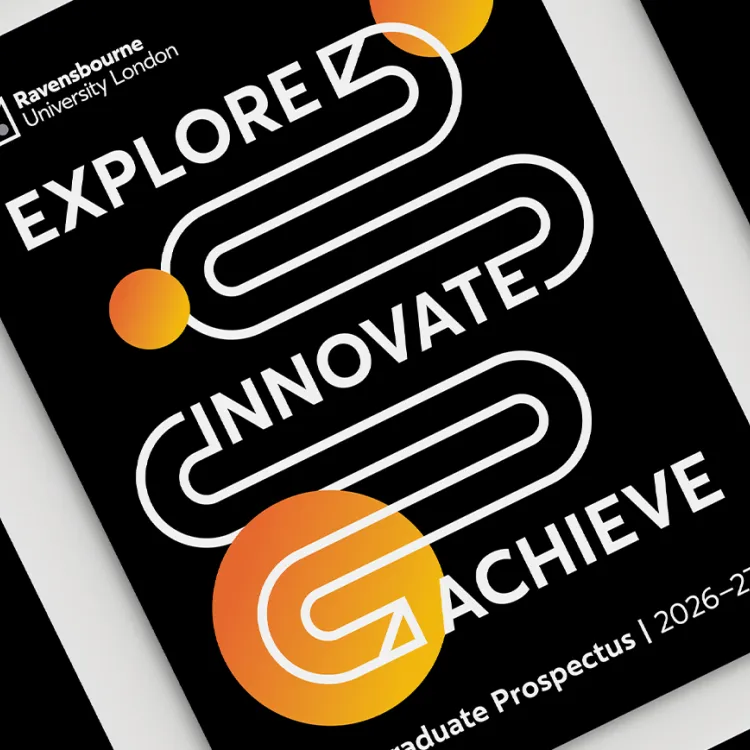Concept and creative process
Terry Wogan had become a brand, recognisable by his surname alone and he was on-air at 7pm three nights a week at the time this new title sequence was commissioned. Jane Walker exploited the many possibilities offered by CGI, which was now gaining in popularity as a viable medium for designers to deliver jobs both on budget and on time. Working together with former BBC colleague Chris Fynes at Infynity, she designed and choreographed a sequence which showcased many of the lighting, transparency, material and motion effects possible at the time, in order to spell out each letter of the 'WOGAN' brand in an intriguing abstract sequence, culminating in the full logo etched in gold and beautifully lit on five overlapping glass panels, each containing an embedded letter, which came together to make the name ‘WOGAN’.
Computer programmer Chris Fynes takes up the story of how he created the sequence:
“It is a great sequence for taking full advantage of what ray-tracing has to offer. It consists of a sequence of shots of 3D models made from a variety of different materials, some that have reflective surfaces, others that show refractions through their transparent body and some with different patterns on their surfaces. Each shot has an abstract relation to one of the letters that makes up the name ‘WOGAN’. The number of bounced reflections and refractions through multiple surfaces can be as many as sixteen. The sequence moves through so fast it is difficult to take in exactly what is involved unless stop-framed and viewed bit by bit. The first shot travels past a variety of different models, such as a curled copper cone, bits of shaped glass, a metal sheet with punched holes in it, ending up on two shards of glass with patterns on the surface, to represent a ‘W’. The patterns are texture maps that are coupled with further maps to determine the levels of transparency in the different parts of the design and another to determine levels of reflections.
We zoom through the ‘W’ to the background, a shot of a ball-bearing dropping into liquid which represents the ‘O’.
This mixes to a shot that clearly shows the diverse range of techniques. Its components are placed together in the form of a ‘G’. Part of its curved wall is made up with a reflective copper sheet containing sections of corrugations that extend either side into thicker panels that have a mottled metallic surface and include a series of four rectangular windows cut into the middle part of the ‘G’. What really makes this sequence is the punched metal sheet it sits on. This has a light placed beneath it that casts shadows and reflections that bounce back and forth between the elements. There are also bubbles that float around and refract parts of the scene. A subtle touch is where the view through one of the windows freezes and pulls away like a magic carpet flying across the frame. It is amazing how the punched metal grid, made with just a texture map of a flat sheet of metal, accompanied by its composite maps to determine its holes and reflections, is respected by the ray-tracing process when it casts its many shadows and reflections. We then end up flying into the middle of a bubble before cutting to the next scene. The whole thing, as with all the other shots in the sequence, was rendered in a single pass.
We next see a model of a copper cone, surrounded by other bits from previous scenes. Note the wonderful moving distortion of the reflections of the punched metal grid in the reflective sides of the cone as we move around it. How nice to see proper reflections!
The next part was not easy to choreograph. It is where the cone, which is actually made up of a spiral, splits and extends its strip to curve around itself in the opposite direction and drop down below to chisel itself into the surface of a plate of glass to form the letter ‘N’. In reality this strip is guided by continually transforming invisible tramlines until it hits the surface of the glass where the letters themselves are also being formed out of its extended tramlines. Needless to say, the whole model has to be calculated and built from scratch for each and every rendered field in the sequence.
This cuts to a shot of the letter ‘O’ also being inlaid into its glass panel. The shot also acted as a background for a live shot of a guest to be subsequently overlaid.
Finally, we cut to the last shot where we see the five glass panels, each containing an embedded letter, coming together to make up Wogan’s surname. This shot also shows the refractions through several layers of glass right through to the background made up of previous elements”.
